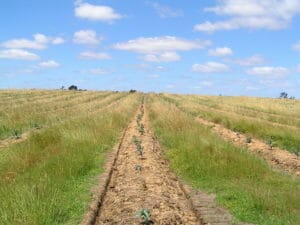New analysis shows timber plantations can help Australia get to net-zero by 2050

Source: Forest & Wood Products Australia
A ground-breaking new analysis produced for the Australian Forest Products Association (AFPA) shows for the first time that growth in Australia’s forestry plantation area can help deliver the nation’s “net-zero by 2050” target.
Victorian Forest Products Association (VFPA) CEO Deb Kerr said modelling in the Principal Economics report reveals the positive impact a surge in timber plantations would deliver on our national and state carbon accounts.
In 2019, Victoria emitted 91.3 megatons (Mt) of carbon dioxide equivalents (CO₂-e), having already reduced its emissions by nearly 25%. Victoria has set an emission reduction target of 28-33% by 2025 and 45-50% by 2030.
“If we plant 120,000 hectares of plantation trees now, those trees will sequester between 109 and 142 Mt CO₂-e by 2050. And not only that – they keep on storing carbon in the trees and harvested wood products for many more years. Planting trees at scale would achieve Victoria’s 2025 and 2030 targets and deliver net-zero by 2050 with nearly 18 Mt CO₂-e to spare”, Ms Kerr said.
In real terms, planting those trees would absorb the emissions of twice the total number of cars in Victoria each year until 2050.
Ms Kerr said that in addition to a climate crisis, Victoria faces a shortage of timber to build homes for future generations. The pandemic-induced decline in imported timber has revealed we have been far too dependent on imports to fill the building supply gaps.
“Several studies have shown that to support Victoria’s growth, we must increase the state’s timber plantation estate. Planting 120,000 hectares by 2030 will meet climate targets and the state’s future housing construction needs,” Ms Kerr concluded.
###
PDF version available here.
